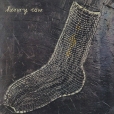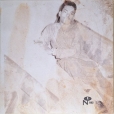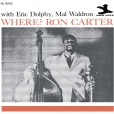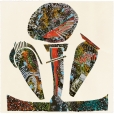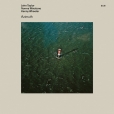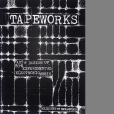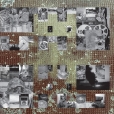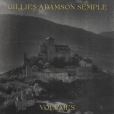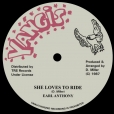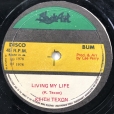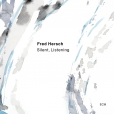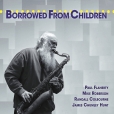Your basket is empty

Adrian Sherwood marshals Bruce Smith, Keith Levene, Ari Up, and Crucial Tony; and George Oban, Eskimo Fox, and Style Scott, from African Head Charge.
‘Operating in the farthest margins of L.A.’s cutthroat music business from 1961-1991, Mel Alexander’s Consolidated Productions was among the longest running Black-owned independent record conglomerates of the 20th century. Disentangling a web of imprints — including Ajax, Angel Town, Car-A-Mel, Emanuel, and Kris — this first volume gathers 28 smouldering R&B cuts by the likes of Lee Harvey, B .B. Carter, Marilyn Calloway, the Del Reys, the Deb Tones, the De Velles, Gene Russell ’s Trio, Jimmy ‘Preacher’ Ellis, and Ty Karim.’
Presented with customary class and attentiveness by Numero.
‘A soundtrack for being unstuck in time, if just for an hour. It is a glide through a rich past and present, with glimpses of a future worth reaching.’
‘Stunning, moody, spiritual jazz from Ireland, recorded in 1979; featuring original compositions such as the deep collectors’ cut Spon Song, subtle Latin flavours on Spacer’s Delight, and a beautiful modal arrangement of the traditional Irish air Castle of Dromore.
‘A legendary recording in Ireland, Ozone reflects Kelehan’s keen appreciation of classic quintet-era Miles, with touches of the cerebral fusion of Ian Carr and the arranging genius of Neil Ardley. Not just a landmark Irish jazz set, Ozone is a lost classic of European jazz more widely.’
Licensed from producer John D’Ardis. Remastered at Abbey Road using the master-tapes; cut at D&M; pressed at Pallas. Presented with previously unseen photographs of the band, and their commentary.
A deadly trump card from Outernational. Essential, startling stuff. Bim bim bim.
‘An alluring, meditative, psychedelic brew of shamanic and alchemical rhythms and harmonies, ranging across a wide array of instruments and influences. Modular synths, a two-stringed erhu fiddle, flute, feedback, electronics, guitar, field recordings, and various percussion objects, in ritualistic studio sessions which are augmented and sampled over and over… with the controls set for other planes of there.’
Luminessence series.
Also sub-titled ‘Kinshasa/Brazzaville 1969-1982’.
‘These new sounds emerged at a time when the Congolese record industry – previously dominated by European major labels – was experiencing a period of decline due to rising production costs.The void was filled by dozens of entrepreneurs willing to take chances on smaller scale releases. It was the beginning of a golden age for Congolese independent record labels, and the best of them – Cover N°1, Mondenge, Editions Moninga, Super Contact – preserved the work of some of the region’s finest artists, while launching a generation of younger musicians into the spotlight.
‘Congo Funk! is the story of these sounds and labels, but also it is the story of two cities, separated by water but united by an indestructible groove. The fourteen songs on this album showcase the many facets of the Congolese capitals, and highlight the bands and artists, famous and obscure, who pushed Rumba to new heights and ultimately influenced the musical landscape of the entire continent and beyond.’
A terrific, insider, pocket-book survey of the artwork of cassettes and records of 80s experimental electronic music — industrial, noise, new wave, minimal, drone, sound art, ambient and more. Out typography and wild lay-outs; free-hand drawings and scans like hauntings, magic, infections; Xerox lovely Xerox.
132 pages; recycled natural paper; some colour.
Beautifully done. Very warmly recommended.
Astounding, deeply exploratory, previously unreleased work by the legendary Brazilian percussionist and composer.
A wild and unsettling collage, implacably original and startlingly intense — from the electroacoustic opener, which channels ancestral African inspirations into cosmogony, through the proto-mixtape Exemplo de Sintetizadores, which transitions from transcendental drones to astral cha-cha-chas, to a musical consideration of dripping water, in Suite Contagotas.
Djalma is best known for his studio work on benchmark albums, including numerous classics by Caetano Veloso, Gilberto Gil, and Jorge Ben, and for his own polyrhythmic opus Baiafro; and the finale here was first performed at the 1964 Nós, Por Exemplo concert, an event often cited as the inauguration of the Tropicalia movement. Djalma brings the electronics — medical oscillators, for example — to beef up his percussion. It’s eye-opening.
Corrêa called it ‘spontaneous music’; sonic adventures ranging audaciously across an array of genres, from jazz to deep funk to complete abstraction, all imbued with his signature DIY ethic.
Drawn from the original master-tapes, guided by Corrêa himself, just prior to his death.
Intriguing, immersive music. Dazzling, engrossing artwork, too.
Drawing inspiration from Sarah Davachi and Kali Malone, six glacial minimalist drones in contemplation of Body and Soul, ecological collapse, and the nature of listening, played on the oldest functioning pipe organ in the world, built in 1435, at the Valère Basilica in the Swiss Alps.
“What I like about the organ is that you can make it feel very physical. It has all these mechanical parts that sound really beautiful.”
Litho cover; riso insert. Tiny run.
DKR NYC on the heart; ORTHODOX BURY THE DEVIL on the back.
Gildan shirts.
Deep, intrepid, alchemical communion between West African kora and European classical guitar.
‘It’s a remarkable album,’ says Lucy Durán. ‘It’s the furthest away that Ballaké has gone from his own idiom and it’s brilliant. Not world music, it’s in a totally different realm, entering new territory.’


